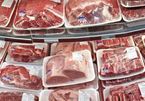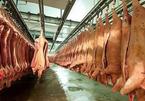
A cow farm in Tay Ninh province. (Photo: channuoivietnam.com)
Livestock production would be developed by modernising and industrialisinglarge-scale and household farms between 2020 and 2030, said Nguyen Xuan Duong,acting Director of the Livestock Production Department.
The industrial-style animal husbandry would be associated with organic andtraditional farming, he said at a meeting on October 25 on Strategies ofLivestock Development by 2020 and 2030 held by the Ministry of Agriculture andRural Development.
Between 2020 and 2030, the sector would focus on breeding pigs, poultry, cowsand dairy cows, which could help bring into full play the country’s potentialand expand the export market.
To realise the set targets, the industry would re-organise slaughtering andprocessing networks to ensure veterinary hygiene, food safety and environmentalprotection.
“So far, the animal husbandry sector has become a commodity production,” saidDuong.
Large and industrial- scale farms account for 45 percent of farms nationwideproducing more than 60 percent of the output, he said.
“The sector had attracted a large number of social resources to invest inlivestock development, especially foreign investors,” he told the meeting.
“The productivity and production costs improved significantly,” he added.
Since 2008, the husbandry sector had gained achievements, producing a varietyof items to meet domestic demand.
Vietnam has become the biggest producer of animal feed in the Association ofthe Southeast Asian Nations (ASEAN).
The yield of cow milk was as high as that of Israel, the Republic of Korea andJapan.
However, breeding proportion in agricultural production reached only 31.5-32 percent,lower than the target of 42 percent.
The reason was that the majority of localities had focused on planting trees,fruits, vegetables and flowers while they had not yet adequately invested inlivestock production.
In the Central Highlands Mekong River Delta regions, animal breeding accountedfor only 15 or 20 percent of agricultural production.
In pig breeding, the strategy set a target of increasing 2 percent annually interms of herds reaching 35 million heads by 2020.
Over 10 years, the pig herds had increased 0.5 percent with total heads rangingfrom 26 to 29 million.
However, the poultry breeding had gained a growth rate of 5.1 percent, higherthan the target. The total poultry had reached 409 million, exceeding the planby 136 percent.
Duong also pointed out shortcomings of the sector. Food safety, hygiene anddisease control in livestock had exposed many shortcomings.
The recent outbreak of African swine fever occurred in many localities, causingbig losses to farmers.
Treatment of waste from husbandry activities had not yet been solved while itwas a key factor causing rural environmental pollution.
In fact, if husbandry waste was properly treated, it would be a valuableresource to produce organic fertilisers and biogas worth 15-20 billion VND ayear.
To accelerate the animal husbandry industry, the government should offerincentives to lure investment from all economic sectors, of which tax and landuse policies were key factors, said Duong./.VNA

Cheap imported meats hurt VN livestock industry
Increasing meat imports are adding to the pressure on the country’s livestock industry brought by free trade agreements and the African swine flu epidemic, experts said.

Imported pork dirt cheap, domestic livestock industry in danger
The amount of pork imported to Vietnam in the first four months of the year was six times higher than that in the entire year of 2018. The import price is VND5,000-7,000 per kilogram lower than the domestic price.
 The animal husbandry industry has set an average growth target of 4 to 5 percent per year from 2020 to 2025, and 3-4 percent in 2026-2030.
The animal husbandry industry has set an average growth target of 4 to 5 percent per year from 2020 to 2025, and 3-4 percent in 2026-2030.